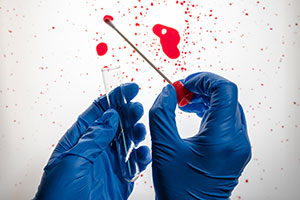The expert whose testimony was key in a 1985 murder conviction now says that he believes some of his conclusions were incorrect.
Murder Conviction of Joe Bryan
Joe Bryan was convicted of killing his wife Mickey in 1985, but has always maintained his innocence. At the time of his arrest, Bryan had no criminal record. In the days surrounding his wife’s murder, Bryan had been 120 miles away at a principals’ convention. According to the state’s theory, Bryan had left his hotel in the middle of the night, drove home and shot his wife, then returned to his hotel and his convention the following morning.
During both of Bryan’s trials, police Detective Robert Thorman’s testimony was key in helping to explain why no blood was found inside Bryan’s car. Thorman testified that the tiny flecks of blood on a flashlight that was found in Bryan’s trunk were “back spatter,” a pattern that indicated a close range shooting. Thorman’s testimony tied the flashlight to the crime scene, when he opined that the killer had likely held the flashlight in one hand while firing a pistol with the other.
Thorman was a police detective from Harker Heights, Texas, who had only had 40 hours of training in bloodstain-pattern analysis when he was called to consult on Bryan’s case.
Innocence Investigation
In May, Bryan’s case was the subject of an investigation by ProPublica and the New York Times Magazine that questioned the accuracy of the bloodstain-pattern analysis that was used to convict him.
Last month, the Texas Forensic Science Commission announced that the blood-spatter analysis that was used to convict Bryan was “not accurate or scientifically supported.” The commission is an organization that investigates complaints about the misuse of forensic testimony and evidence and criminal cases.
The commission asked bloodstain-pattern analyst Celestina Rossi to re-examine the case. Rossi was critical of Thorman’s interpretation of the crime scene and the flashlight. Rossi determined that the dark-brown flecks that were found on the flashlight did not “radiate back in a radiating pattern” as they would have in “a back-spatter event.” Therefore, she concluded that the bloodstains were inconsistent with a close range shooting.
Rossi said, “Thorman’s testimony was egregiously wrong. . . . If any juror relied on any party of his testimony to render a verdict, Mr. Bryan deserves a new trial.” Thorman’s “expert” testimony is another example of how police officers who dabble as “experts” often see themselves as advocates who seek convictions rather than neutral experts who seek the truth.
Affidavit Recanting Testimony
Bryan’s defense team filed a motion for a new trial. At a hearing on the motion, Bryan’s attorney Jessi Freud presented an affidavit for Robert Thorman recanting his testimony.
Thorman’s affidavit stated, “Some of the techniques and methodology were incorrect. Therefore, some of my testimony was not correct.” Thorman stated, “In no way did I lie in my report or testimony. . . . I was doing what I thought was correct as a result of my training at the time.” Thorman’s affidavit did not specify which portions of his testimony were erroneous.
The motion is before Judge Doug Shaver who will make a recommendation to the Court of Criminal Appeals as to whether Joe Bryan should get a new trial.




